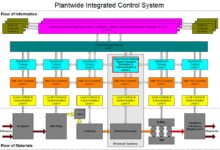System Haptics: 7 Revolutionary Advances You Can’t Ignore
Imagine feeling the texture of a fabric through your phone or sensing a virtual heartbeat in a game—this is the magic of system haptics. No longer just about vibrations, modern haptic technology creates immersive, lifelike touch experiences across devices and industries.
What Are System Haptics and How Do They Work?

System haptics refers to the integrated technology that delivers tactile feedback through vibrations, forces, and motions in electronic devices. Unlike simple buzzes from early mobile phones, today’s system haptics are engineered for precision, timing, and realism, simulating textures, clicks, and even resistance.
The Science Behind Tactile Feedback
At its core, system haptics relies on human psychophysics—the study of how we perceive physical stimuli. When a device vibrates or applies force, mechanoreceptors in our skin detect the change and send signals to the brain. Advanced system haptics manipulate variables like frequency, amplitude, and duration to mimic real-world sensations.
- Low-frequency vibrations simulate deep pressure or rumbling.
- High-frequency pulses create the sensation of sharp taps or textures.
- Waveform shaping allows for nuanced feedback, such as a soft swipe or a hard click.
“Haptics is the missing link in multisensory interfaces—without touch, digital experiences remain flat,” says Dr. Lynette Jones, a senior research scientist at MIT specializing in wearable haptics.
Core Components of System Haptics
Modern system haptics are not just about motors. They involve a sophisticated interplay of hardware, software, and sensory design. Key components include:
- Actuators: These are the physical devices that generate motion. Common types include Eccentric Rotating Mass (ERM) motors, Linear Resonant Actuators (LRA), and piezoelectric actuators.
- Control Systems: Microcontrollers and firmware regulate the intensity, timing, and pattern of haptic feedback based on user input or system events.
- Haptic Drivers: Integrated circuits that amplify signals and deliver precise power to actuators, ensuring consistent performance.
- Software APIs: Platforms like Apple’s Core Haptics or Android’s Haptic Feedback API allow developers to design custom tactile responses.
For example, Apple’s Taptic Engine—a hallmark of system haptics in iPhones and Apple Watches—uses LRAs to deliver crisp, localized feedback that feels more like a physical button press than a vibration.
Evolution of System Haptics: From Buzz to Realism
The journey of system haptics spans decades, evolving from rudimentary alerts to nuanced, context-aware touch responses. Understanding this progression reveals how far the technology has come and where it’s headed.
Early Days: Simple Vibration Motors
In the 1990s and early 2000s, most mobile devices used ERM motors—essentially small motors with off-center weights that spun to create a buzzing sensation. These were effective for alerts but lacked precision and responsiveness.
- Limited control over vibration intensity and duration.
- Slow start-up and stop times, leading to delayed feedback.
- High power consumption and mechanical wear.
Despite their limitations, ERM motors laid the foundation for user expectations around tactile alerts in mobile communication.
Rise of Linear Resonant Actuators (LRAs)
The introduction of LRAs marked a turning point in system haptics. Unlike ERMs, LRAs use a magnetic coil to move a mass back and forth along a single axis, enabling faster response times and cleaner vibrations.
- LRAs can start and stop within milliseconds, allowing for precise timing.
- They consume less power and generate less heat than ERMs.
- Capable of producing a wider range of tactile sensations, from soft pulses to sharp taps.
Companies like Borreltijn, a leader in haptic solutions, have pioneered LRA integration in consumer electronics, automotive interfaces, and medical devices.
Piezoelectric Haptics: The Next Frontier
Piezoelectric actuators represent the cutting edge of system haptics. When voltage is applied to certain crystals or ceramics, they deform instantly, producing highly responsive and energy-efficient motion.
- Response times under 1 millisecond—faster than human perception.
- Can simulate fine textures and high-frequency feedback.
- Thin and lightweight, ideal for wearables and foldable devices.
Brands like LG and Xiaomi have experimented with piezoelectric haptics in smartphones, offering users a more refined tactile experience. Research from ScienceDirect highlights their potential in virtual reality and surgical simulators.
Applications of System Haptics Across Industries
System haptics are no longer confined to smartphones. Their ability to convey information through touch makes them invaluable across diverse fields, from healthcare to automotive design.
Smartphones and Wearables
In mobile devices, system haptics enhance usability and immersion. Apple’s implementation in the iPhone and Watch sets a benchmark, using haptics for:
- Simulating button presses on virtual keyboards.
- Providing navigation cues (e.g., a tap when turning).
- Delivering discreet notifications via patterned pulses.
Android devices have followed suit, with manufacturers like Samsung and Google incorporating advanced LRAs and haptic tuning for a premium feel.
Automotive User Interfaces
As cars become more digital, physical buttons are being replaced by touchscreens and gesture controls. System haptics restore the tactile feedback drivers rely on for safety and confidence.
- Haptic touchscreens confirm selections with a subtle pulse.
- Steering wheel vibrations alert drivers to lane departures or incoming calls.
- Seat-based haptics provide directional cues in navigation systems.
BMW and Tesla have integrated system haptics into their infotainment systems, reducing driver distraction by minimizing the need to look at screens.
Gaming and Virtual Reality
In gaming, system haptics transform how players interact with virtual worlds. The PlayStation 5’s DualSense controller is a prime example, featuring:
- Adaptive triggers that simulate resistance (e.g., drawing a bowstring).
- Dynamic haptic feedback that mimics terrain, weather, or weapon recoil.
- Context-sensitive vibrations that change based on in-game actions.
According to a GameSpot review, these features significantly increase immersion, making players feel like they’re truly inside the game.
How System Haptics Enhance Accessibility
One of the most impactful uses of system haptics is in accessibility. For users with visual or auditory impairments, tactile feedback provides a critical channel for information.
Assistive Technology for the Visually Impaired
Smartphones and wearables use system haptics to deliver non-visual cues. For example:
- Braille-like patterns convey messages through timed pulses.
- Navigation apps use directional haptics to guide users via wrist taps.
- Screen readers combine audio with haptic confirmation for menu selections.
Microsoft’s Accessibility Insights program highlights haptics as a key enabler for inclusive design.
Communication for the Deaf and Hard of Hearing
System haptics can translate sound into touch. Apps like SoundWatch on Apple Watch detect environmental sounds (e.g., doorbells, alarms) and notify users through customizable vibrations.
- Different patterns represent different sounds.
- Intensity varies with sound volume.
- Integration with smart home devices enhances situational awareness.
This application of system haptics empowers users to stay connected to their environment without relying on hearing.
Cognitive and Motor Skill Support
For individuals with cognitive or motor challenges, consistent tactile feedback improves interaction reliability. Devices can be programmed to:
- Confirm successful inputs with a strong pulse.
- Guide users through step-by-step processes using rhythmic cues.
- Reduce errors by providing immediate feedback on incorrect actions.
Therapists and educators are beginning to use haptic-enabled tablets and wearables in developmental programs for children with autism and ADHD.
Innovations in System Haptics: What’s Next?
The future of system haptics is not just about better vibrations—it’s about creating a full tactile language. Emerging technologies are pushing the boundaries of what’s possible.
Ultrasound Haptic Feedback (Mid-Air Haptics)
Ultrasound arrays can project focused sound waves into the air, creating pressure points on the skin without physical contact. This allows users to “feel” virtual buttons floating in space.
- No need for wearable devices or controllers.
- Can simulate shape, texture, and movement.
- Ideal for public interfaces (e.g., ATMs, kiosks) where hygiene matters.
Ultraleap, a UK-based company, has commercialized this technology for automotive and medical applications. Their research shows users can distinguish between virtual sliders, buttons, and dials using mid-air haptics.
Electrostatic Haptics (Surface Haptics)
By altering the friction between a finger and a touchscreen, electrostatic haptics simulate textures like ridges, bumps, or roughness. This is achieved by applying a small electric charge to the screen surface.
- Users feel virtual textures without mechanical movement.
- Energy-efficient and silent.
- Enables rich tactile exploration in maps, games, and e-books.
Tactus Technology and Senseg have developed prototypes that allow users to “feel” the edges of icons or the grain of paper on a tablet.
Haptic Suits and Full-Body Feedback
For VR and training simulations, full-body haptic suits deliver immersive tactile experiences. Companies like Teslasuit and bHaptics offer garments embedded with actuators that simulate:
- Impact from virtual objects.
- Temperature changes.
- Muscle resistance during exercise or rehabilitation.
These systems use system haptics at scale, synchronizing feedback across multiple body zones for realism. Military and medical training programs are early adopters, using haptic suits to simulate battlefield conditions or surgical procedures.
Challenges and Limitations of System Haptics
Despite rapid advancements, system haptics face technical, ergonomic, and perceptual challenges that limit widespread adoption.
Battery Consumption and Power Efficiency
Haptic actuators, especially piezoelectric and high-power LRAs, can drain device batteries quickly. Designers must balance feedback quality with energy use.
- Optimizing waveform duration and intensity reduces power draw.
- Smart haptic scheduling (e.g., only activating when needed) improves efficiency.
- Advances in low-voltage actuators are helping extend battery life.
For wearables like smartwatches, where battery capacity is limited, efficient system haptics are crucial.
User Fatigue and Overstimulation
Excessive or poorly designed haptic feedback can lead to sensory overload or discomfort. Users may disable haptics entirely if they feel intrusive.
- Long-duration vibrations can cause numbness or irritation.
- Inconsistent feedback patterns confuse users.
- Lack of personalization leads to one-size-fits-all experiences.
Best practices recommend using haptics sparingly and allowing users to customize intensity and frequency.
Standardization and Cross-Platform Compatibility
Unlike audio or visual standards, haptic feedback lacks universal guidelines. What feels like a “click” on one device may feel like a “thud” on another.
- Developers struggle to create consistent experiences across iOS, Android, and web platforms.
- No common language for describing haptic effects (e.g., “soft tap” vs. “firm press”).
- Fragmentation in hardware capabilities limits design possibilities.
Organizations like the World Wide Web Consortium (W3C) are working on haptic API standards to address these issues.
Designing Effective System Haptics: Best Practices
Creating meaningful haptic experiences requires more than just technical know-how—it demands empathy, psychology, and user-centered design.
Principles of Haptic UX Design
Effective system haptics should be subtle, informative, and context-aware. Key principles include:
- Relevance: Feedback should match the user action (e.g., a soft pulse for a message sent).
- Timing: Delayed haptics break the illusion of direct interaction.
- Consistency: The same action should produce the same feedback across the app or device.
- Minimalism: Avoid unnecessary vibrations that distract or annoy.
Google’s Material Design guidelines emphasize using haptics to “reinforce user actions” without overwhelming the senses.
Testing and User Feedback
Because haptic perception varies between individuals, rigorous testing is essential. Methods include:
- Controlled lab studies with psychophysical measurements.
- User surveys to assess comfort and clarity.
- A/B testing different haptic patterns in real-world scenarios.
Apple, for instance, conducts extensive user testing to fine-tune the Taptic Engine’s response for different gestures and alerts.
Personalization and Adaptive Haptics
The future of system haptics lies in adaptability. Smart systems can learn user preferences and adjust feedback accordingly.
- AI-driven haptics that respond to user behavior (e.g., stronger pulses for older users).
- Context-aware feedback that changes based on environment (e.g., louder haptics in noisy areas).
- Integration with biometrics (e.g., adjusting intensity based on heart rate or stress levels).
Research from Stanford’s HAI (Human-Centered AI) Institute suggests adaptive haptics could improve user satisfaction by up to 40%.
Future Outlook: The Role of System Haptics in Human-Computer Interaction
As technology becomes more invisible, the sense of touch will play a growing role in how we interact with digital systems. System haptics are poised to become a foundational element of next-generation interfaces.
Integration with AI and Machine Learning
AI can analyze user behavior and environmental data to optimize haptic feedback in real time. For example:
- An AI assistant could use haptics to convey urgency (e.g., a rapid pulse for an emergency alert).
- ML models can predict which haptic patterns users prefer based on usage history.
- Contextual awareness allows devices to mute haptics during meetings or amplify them during exercise.
This synergy between AI and system haptics will enable more intuitive and responsive interactions.
Haptics in the Metaverse and Spatial Computing
In virtual and augmented reality environments, system haptics are essential for presence and believability. Future metaverse platforms will rely on:
- Full-body haptic suits for immersive experiences.
- Object interaction feedback (e.g., feeling the weight of a virtual tool).
- Social haptics—simulating handshakes, hugs, or high-fives in virtual spaces.
Meta (formerly Facebook) has invested heavily in haptic research, aiming to make touch a core component of its metaverse vision.
Sustainable and Ethical Considerations
As system haptics become more pervasive, ethical questions arise. Should devices be allowed to manipulate emotions through touch? How do we prevent haptic addiction or overstimulation?
- Designers must prioritize user well-being over engagement metrics.
- Transparency in haptic use (e.g., informing users when feedback is active).
- Sustainable materials and energy-efficient designs to reduce environmental impact.
The IEEE Global Initiative on Ethics of Autonomous and Intelligent Systems advocates for “haptic ethics” frameworks to guide responsible development.
What are system haptics?
System haptics are integrated technologies that provide tactile feedback in electronic devices through vibrations, forces, and motions. They enhance user experience by simulating real-world touch sensations in smartphones, wearables, cars, and VR systems.
How do system haptics improve smartphone usability?
They provide precise feedback for virtual buttons, navigation cues, and notifications, reducing reliance on visual confirmation. This improves accessibility, safety, and overall interaction quality.
Are haptic feedback systems used in medical training?
Yes, system haptics are used in surgical simulators to replicate the feel of tissues, resistance, and tools. This allows trainees to practice procedures in a risk-free environment with realistic tactile feedback.
Can haptics be personalized for individual users?
Yes, modern system haptics can be customized for intensity, pattern, and timing. Future systems may use AI to adapt feedback based on user preferences, age, or physical condition.
What is the future of system haptics?
The future includes mid-air haptics, full-body suits, AI-driven feedback, and integration into the metaverse. The goal is to create seamless, natural, and emotionally resonant touch experiences in digital environments.
System haptics have evolved from simple buzzes to sophisticated tactile interfaces that enrich how we interact with technology. From smartphones to surgical simulators, they bridge the gap between digital and physical worlds. As innovation continues, system haptics will play an increasingly vital role in accessibility, immersion, and human-centered design. The future of touch is not just felt—it’s felt everywhere.
Further Reading:









